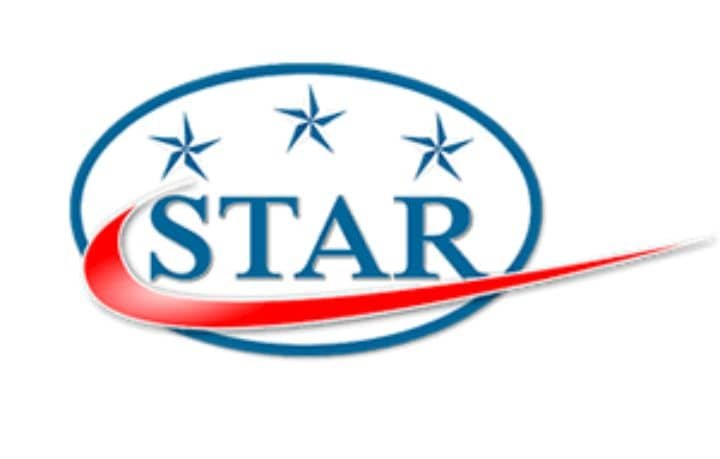Abia State’s Historic Acquisition of Star Paper Mill: A Catalyst for Industrial Renaissance in Southeastern Nigeria
Executive Summary
In a landmark development for industrial policy in southeastern Nigeria, Abia State Governor Alex Otti has successfully secured approval for the acquisition of the moribund Star Paper Mill from the Asset Management Corporation of Nigeria (AMCON). This strategic move, announced on August 7, 2025, represents a decisive step toward revitalizing one of Nigeria’s formerly thriving industrial assets that had become a symbol of economic decay after years of abandonment. The acquisition signals a bold commitment to reversing industrial decline and stimulating economic regeneration through a public-private partnership model that prioritizes private sector management expertise while leveraging government resources for initial reactivation. This comprehensive analysis examines the historical context, strategic implications, economic potential, and governance innovations embedded in this transformative initiative, positioning it as a potential template for industrial revival across Nigeria’s subnational entities.
1 Historical Context and Significance of Star Paper Mill
Star Paper Mill Limited, once numbered among Nigeria’s premier industrial establishments, has a storied history that reflects the broader trajectory of Nigerian manufacturing. Established by visionary Abiriba-born industrialist Nnanna Kalu, the mill operated for decades as a leading producer of exercise books, tissue paper, and various paper products that served markets across Nigeria and beyond . Its location in Aba, historically known as Japan of Africa for its entrepreneurial energy and manufacturing prowess, positioned it at the heart of the southeastern industrial ecosystem.
The mill’s significance extended far beyond its immediate economic contributions as it:
Served as a major employment hub for skilled and unskilled workers throughout the region
Stimulated ancillary businesses through backward and forward linkages
Represented indigenous industrial capability at its most robust
Contributed to human capital development through technical skills transfer
Stood as a point of pride for the entire eastern region
Following the death of its founder, management passed to his son, but the enterprise succumbed to Nigeria’s challenging economic climate over a decade ago, ultimately closing its doors and laying off its workforce . The subsequent takeover by AMCON represented a temporary stabilization measure but failed to reactivate production, leaving the facility to deteriorate further amidst legal and financial complexities .
2 The Acquisition Agreement: Terms, Timeline, and Transaction Structure
Governor Otti’s announcement during the graduation ceremony of the first cohort of the Abia Leadership Academy provided definitive clarity on a process that began with preliminary discussions earlier in 2025 . The AMCON Board formally approved the transfer on August 7, 2025, paving the way for financial settlement and operational transfer in the subsequent days.

The acquisition of the Star Paper Mill by the Abia State government marked a significant milestone in the mill’s history. The process began in June 2025, when the state government submitted a formal buyback offer to the Asset Management Corporation of Nigeria (AMCON).
A crucial step forward was taken on August 7, 2025, when the governing board of AMCON approved the acquisition terms. This paved the way for the finalization of the purchase.
By mid-August 2025, the state government is expected to make the payment and assume formal ownership of the mill. This will mark a significant turning point in the mill’s history, as it will transition from being an asset held by AMCON to being a state-owned enterprise.
Looking ahead to late 2025, the state government plans to commence a comprehensive overhaul of the mill’s machinery and facilities. This retrofitting process will be instrumental in restoring the mill to its former glory and ensuring its long-term viability.
While the specific financial terms remain undisclosed, the transaction represents one of the most significant state-level industrial acquisitions in recent Nigerian history. The governance structure outlined by Governor Otti explicitly avoids permanent state ownership, instead envisioning a temporary stewardship model where the government facilitates reactivation before transferring operational control to private sector specialists . This approach aims to combine the financial capacity and risk tolerance of government with the efficiency and market discipline of private enterprise.
3 Economic Impact and Potential for Industrial Revival
The reactivation of Star Paper Mill holds transformative potential for Abia State and the broader southeastern economy through multiple channels:
3.1 Employment Generation and Human Capital Development
The direct revival of the mill is projected to create thousands of jobs across skill levels, from technical specialists to production staff and administrative support . Indirect employment through supply chains, distribution networks, and ancillary services could multiply this impact significantly, addressing the pressing challenge of youth unemployment that has plagued the region.
3.2 Industrial Ecosystem Regeneration
As a anchor industry, the paper mill will stimulate demand for related services and inputs, potentially attracting complementary investments and revitalizing Aba’s manufacturing ecosystem. The historical concentration of manufacturing expertise in Aba provides a foundation for this regeneration, with the mill serving as a catalyst for broader industrial reactivation .
3.3 Import Substitution and Foreign Exchange Conservation
Nigeria annually spends significant foreign exchange on paper product imports, a drain on national reserves that could be mitigated through domestic production capacity. The revival of Star Paper Mill could substantially reduce imports of exercise books, tissue products, and specialty papers, contributing to national economic stability.
The revival of the Star Paper Mill is expected to have a significant impact on employment in the region. In the short-term (1-2 years), the mill is projected to create 500-800 direct jobs. This number is expected to increase to 1,200-1,500 jobs in the medium-term (3-5 years) and 1,500-2,000+ jobs in the long-term (5+ years).
In addition to direct employment, the mill’s revival is also expected to generate indirect employment opportunities. In the short-term, 300-500 indirect jobs are projected to be created. This number is expected to increase to 800-1,200 jobs in the medium-term and 1,500-2,500 jobs in the long-term.
The revival of the Star Paper Mill is also expected to have a positive impact on the economy through import substitution. In the short-term, the mill is projected to save the country ₦2-3 billion annually through reduced imports. This amount is expected to increase to ₦5-7 billion annually in the medium-term and ₦10+ billion annually in the long-term.
Finally, the revival of the Star Paper Mill is expected to have a positive impact on the development of ancillary industries in the region. In the short-term, the impact is expected to be minimal. However, in the medium-term, 5-10 new businesses are projected to emerge, increasing to 15-30 new businesses in the long-term.
4 The Otti Administration’s Governance Model: Principles and Practices
Governor Otti’s approach to the Star Paper Mill revival reflects a broader governance philosophy that has characterized his administration since assuming office in 2023. Several distinctive principles emerge from this initiative:
4.1 Pragmatic Public-Private Partnership
The explicit commitment to eventually transfer the revived mill to private sector operators demonstrates a rejection of the state-owned enterprise model that has proven inefficient across Nigeria’s industrial landscape. This pragmatic recognition of governmental limitations while leveraging its unique capacities represents an innovative approach to industrial policy .
4.2 Historical Consciousness and Institutional Memory
The governor’s frequent references to having “grown up in Aba” and witnessed the mill’s historical significance demonstrates an appreciation for institutional memory and cultural resonance in economic planning. This connection to regional industrial heritage provides a foundation for culturally grounded development strategy .
4.3 Concurrent Infrastructure Development
Beyond the paper mill acquisition, the administration is pursuing complementary infrastructure investments, most notably in power supply through the acquisition of the Abia North and Umuahia ring-fenced electricity distribution network from EEDC . This recognition of the interconnected nature of industrial viability—where reliable energy supply determines manufacturing success—demonstrates a systemic approach to economic revival.
5 Broader Policy Initiatives and Supportive Ecosystems
The Star Paper Mill acquisition does not exist in isolation but forms part of a comprehensive economic strategy that includes several complementary initiatives:
5.1 Energy Security and Power Infrastructure
The administration’s parallel negotiations to acquire the Abia North and Umuahia ring-fenced electricity distribution network from the Enugu Electricity Distribution Company (EEDC) aims to address the critical constraint of unreliable power that has hampered Nigerian manufacturing . This vertical integration approach to industrial policy—ensuring control over essential inputs—demonstrates sophisticated economic planning unprecedented at the state level.
5.2 Workforce Development and Technical Training
The Abia Leadership Academy, whose graduation ceremony served as the venue for the acquisition announcement, represents the human capital development dimension of the administration’s strategy. By cultivating a new generation of public and private sector leaders with modern technical and managerial skills, the government aims to create a supportive ecosystem for revived industries .
5.3 Multi-Industrial Revival Strategy
Beyond paper manufacturing, the administration has announced plans to revive the equally moribund Aba Textile Mill, indicating a comprehensive approach to industrial renewal that targets multiple sectors simultaneously . This diversified strategy reduces risk while maximizing the potential for synergistic relationships between revitalized industries.
6 Challenges, Risks, and Mitigation Strategies
Despite the enthusiastic announcement and careful planning, the revival initiative faces significant challenges that will require strategic mitigation:
6.1 Technical Obsolescence and Retrofitting Costs
The advanced state of decay in the facility’s machinery and infrastructure poses a substantial technical and financial challenge. The administration has acknowledged this through its commitment to “retrofit and retool” the facility, but the costs and complexities of this process remain largely undefined in public statements .
6.2 Market Dynamics and Competitive Pressures
The global paper industry has evolved significantly during the mill’s inactivity, with digitalization reducing demand for certain paper products while creating new opportunities for specialized grades. A comprehensive market analysis will be essential to position the revived mill for commercial viability.
6.3 Environmental Compliance and Sustainability Concerns
Modern paper manufacturing faces stringent environmental regulations regarding water usage, chemical management, and emissions control. The revival process must incorporate contemporary environmental standards, potentially adding to capital requirements but creating opportunities for sustainable competitive advantage.
7 Future Prospects and Concluding Assessment
The acquisition of Star Paper Mill represents more than just the revival of a single industrial asset—it signals a broader philosophical shift in economic governance at the subnational level in Nigeria. Several key insights emerge from this development:
7.1 Symbolic Importance and Demonstration Effect
As one of the first major state-led industrial revivals in southeastern Nigeria, the project’s progress will be closely watched by other states and potential investors. Early success could trigger emulative initiatives across the region, potentially catalyzing a wider industrial renaissance .
7.2 Private Sector Confidence and Investment Signals
The administration’s ability to attract private sector operators to eventually manage the facility will serve as a crucial test of market confidence in the governance environment being created by the current leadership. Positive response from reputable industrial operators would validate the approach and stimulate further investment flows.
7.3 Technical and Financial Partnership Opportunities
The complexity of industrial revival suggests that international partnerships with technical experts, equipment suppliers, and paper industry specialists will be essential for success. The administration’s ability to forge these relationships will significantly influence operational outcomes.
In conclusion, the Otti administration’s acquisition of Star Paper Mill represents a bold and potentially transformative initiative in subnational industrial policy. By combining historical awareness with contemporary governance principles, the approach offers a promising template for reversing deindustrialization in Nigeria’s southeastern region. While significant challenges remain, the strategic coherence of the plan—particularly its integration with complementary infrastructure and human capital investments—suggests a substantially higher probability of success than previous isolated revival attempts. The progress of this initiative will undoubtedly represent a case study in state-level industrial policy for years to come, with implications far beyond Abia State’s borders.
“The acquisition and planned revival of Star Paper Mill represents the first real step to industrial rebirth in Abia” – Social and economic commentators .
Dr Chukwuemeka Ifegwu







